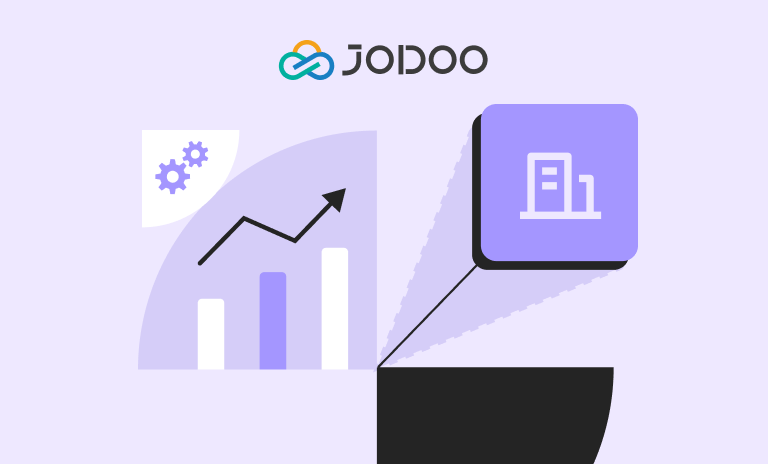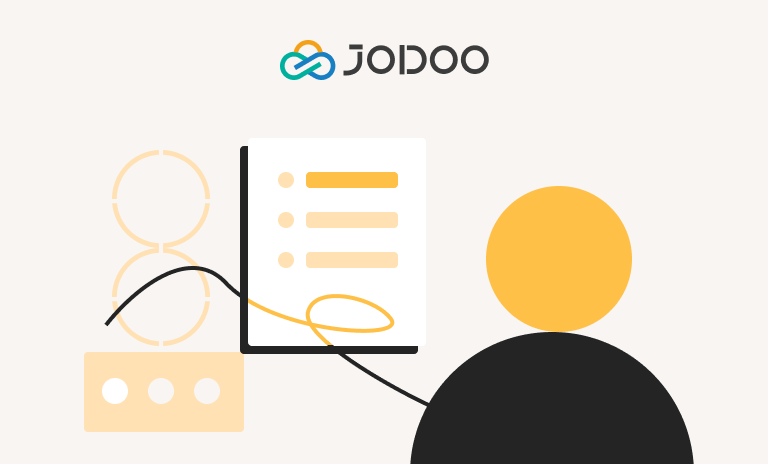In today’s rapidly evolving business landscape, the ability to adapt and innovate is paramount. Traditional IT development models, while robust, often struggle to keep pace with the dynamic needs of modern enterprises. This is where Citizen Development emerges as a transformative force, empowering individuals across an organization to build applications and solutions without extensive coding knowledge. It’s about democratizing technology, fostering agility, and unlocking a new era of innovation.
Understanding Citizen Development: Bridging the Gap Between Business and IT
Citizen development isn’t just a buzzword; it’s a strategic approach that redefines the relationship between business and IT. Historically, IT departments have been the sole custodians of technology, building and maintaining complex systems to support business functions. This often led to a bottleneck, with business units waiting for IT resources to address their evolving needs. While this ‘informatization’ approach was crucial for establishing foundational systems, the digital age demands more.
Digitalization, in contrast, is the seamless integration of IT and business. It’s not just about supporting existing processes but actively empowering business development through digital means. Citizen development plays a pivotal role in this shift, enabling business users – those closest to the operational challenges and opportunities – to directly contribute to digital solutions.
Two Pathways to Digital Empowerment: IT-Guided and Business-Driven Citizen Development

Based on extensive experience, two primary models for promoting citizen development have emerged, each tailored to different organizational contexts and maturity levels:
IT-Guided Citizen Development: From Support to Strategic Partnership
In many established enterprises, the IT department is a recognized pillar, responsible for critical systems and infrastructure. With the advent of digital transformation, IT’s role is evolving from a back-office support function to a strategic driver of innovation. Guiding citizen development is a key part of this evolution.
Why IT Should Lead the Charge:
- Reduced IT Costs: As business demands for customized applications grow, relying solely on traditional IT development becomes expensive and time-consuming. By empowering business users to handle lightweight, personalized system needs, IT can significantly reduce development backlogs and associated costs. It’s the classic “teach a man to fish” scenario – enabling self-sufficiency rather than constant reliance.
- Enhanced IT Value: When IT departments delegate routine application development, they can refocus their expertise on higher-value, enterprise-level initiatives. This includes tackling complex digital architecture, data platforms, IoT, and advanced analytics. By actively integrating with business units and empowering them with technology, IT transforms from a cost center into a value creator, directly contributing to the enterprise’s main value chain.
How IT Can Guide Citizen Development:
- Self-Redefinition: IT must shift its mindset from passive maintenance to active promotion. This means moving out of the back office and deeply understanding business operations, becoming evangelists for digital transformation, and viewing IT investment as a source of return, not just an expense.
- Integration of IT and Business: True digital transformation requires seamless collaboration. IT technicians should actively engage with business departments, attending meetings, learning their processes, and aligning IT goals directly with business objectives. This fosters a shared understanding and a unified approach to digital solutions.
- Build the Technical Foundation: While business users build applications, IT provides the essential infrastructure. This includes establishing a secure, scalable application platform and providing user-friendly no-code/low-code tools. IT also prepares foundational data and organizational structures to support business-led development.
- Empower Business: IT holds the keys to data and technology. By leveraging these strengths, IT can empower business users with the knowledge and tools to develop their own solutions, enhancing the overall digital capability of the enterprise.
Business-Driven Citizen Development: Agility from the Frontlines
In contrast to IT-guided models, business-driven citizen development often arises in environments with lower existing informatization levels, such as certain traditional industries or rapidly growing small-to-medium enterprises. Here, the impetus for digital transformation comes directly from the business units themselves, driven by urgent needs for efficiency and innovation.
Why Business Takes the Lead:
- Improve Efficiency: Business units are on the frontlines, experiencing daily operational challenges. They are uniquely positioned to identify inefficiencies and design digital applications that directly address them. In fast-paced environments, waiting for centralized IT to develop solutions is often not feasible. Business self-development allows for rapid iteration and ensures solutions perfectly match operational needs.
- Stimulate Innovation: Beyond efficiency, business-driven citizen development fosters a culture of innovation. When frontline personnel are empowered with digital tools, they can experiment with new approaches, transform existing processes, and even create entirely new business models. This cultivates digital thinking throughout the organization, leading to organic, bottom-up innovation.
How Business Implements Citizen Development:
- Cultivate Awareness: For citizen development to thrive, business personnel need to understand its value and their role in it. This involves advocating for digital value in daily work, organizing activities to foster digital literacy, and learning from benchmark enterprises.
- Build Capability: Practical digital construction skills are essential. This includes not only proficiency with no-code tools but also the ability to design effective business transformation frameworks. Training and support from professional service providers can accelerate this capability-building.
- Streamline Business: Citizen development is ultimately about improving business. Business units should focus on identifying repetitive tasks, optimizing processes, and leveraging automation to free up human resources for higher-value activities. This requires a comprehensive streamlining of existing business processes.
- Business Online Implementation: With user-friendly no-code platforms, business users can quickly digitize and automate departmental processes. This direct implementation by business personnel is the ultimate realization of citizen development’s potential, driving digital transformation from within departments and across the entire enterprise.
Citizen development, whether IT-guided or business-driven, represents a powerful paradigm shift. It’s about unleashing the collective intelligence and creativity within an organization, accelerating digital transformation, and building a more agile, innovative future. The next section will explore a real-world example of this in action, showcasing how DERLOOK, a leader in luxury home furnishings, leveraged citizen development to overcome significant operational challenges and achieve remarkable results.
Empowering Innovation with Citizen Development: Bridging Business and IT for Digital Transformation
DERLOOK, a leading integrator of high-end home furnishing and building materials brands with over 40 retail locations and 1,000+ professionals, faced significant operational challenges amidst rapid growth. Traditional IT systems struggled to keep pace with evolving market demands, leading to digital fragmentation, reliance on manual processes, and limited agility in market response.

The Challenge: Scaling Operations in a Complex Environment
- Digital Fragmentation: Existing ERP platforms were insufficient for modern retail, failing to integrate seamlessly with external platforms and hindering online-offline integration.
- Manual Processes: Financial reconciliation was a time-consuming, error-prone manual process, requiring merchants to physically visit the Finance Department for settlements.
- Limited Agility: Traditional development cycles were too slow, taking months to implement minor system modifications in a fast-moving retail environment.
The Solution: Embracing Citizen Development with Jodoo
DERLOOK strategically adopted Jodoo’s no-code development platform, recognizing its ability to provide seamless connectivity with existing systems and comprehensive support for both PC and mobile terminals. Their implementation philosophy focused on creating complementary applications to address specific pain points rather than replacing entire systems.
Transforming Operations: Key Successes
DERLOOK’s citizen development initiative led to dramatic improvements across several key areas:
- Electronic Billing: A new system automated data aggregation, processing, and distribution, reducing reconciliation cycles from two days to three minutes and achieving a 96.5% customer satisfaction rate among merchants. This resulted in a 40% reduction in financial workload.
- Smart Survey Management: The Jodoo solution enabled precise customer segmentation and real-time visualization of data, improving response times by 60% and eliminating external platform costs.
- Mobile Site Selection and Project Management: Mobile-friendly forms with real-time notifications and approval capabilities streamlined national expansion efforts, eliminating material transport and enhancing project oversight.
Building Competitive Advantage
DERLOOK’s journey highlights three key improvements:
- Enhanced Operational Efficiency: Automation of manual tasks and seamless system integrations eliminated countless work hours and reduced human error.
- Significant Cost Reduction and Time Savings: Quantifiable benefits included a 40% reduction in financial workload and a 60% improvement in survey response time. The no-code approach drastically cut application development time from months to weeks.
- Increased Business Agility and Scalability: Empowering business users to create and modify applications without extensive IT involvement reduced bottlenecks, proving invaluable during national expansion.
DERLOOK’s success demonstrates the transformative potential of citizen development in empowering business users to address operational challenges, catalyze organizational transformation, and maintain a competitive advantage in a dynamic market. It underscores that success lies not just in technology selection, but in a clear vision of how technology enables business objectives and fosters continuous user innovation.
Ready to Transform Your Business with Citizen Development?
DERLOOK’s journey is a testament to the power of citizen development in driving significant business transformation. By empowering their teams with the right tools, they achieved remarkable improvements in efficiency, cost reduction, and agility.
Want to dive deeper into DERLOOK’s success story and learn how citizen development can unlock similar potential within your organization?
Read the full DERLOOK Customer Story here! https://www.jodoo.com/blog/customer-story-derlook


